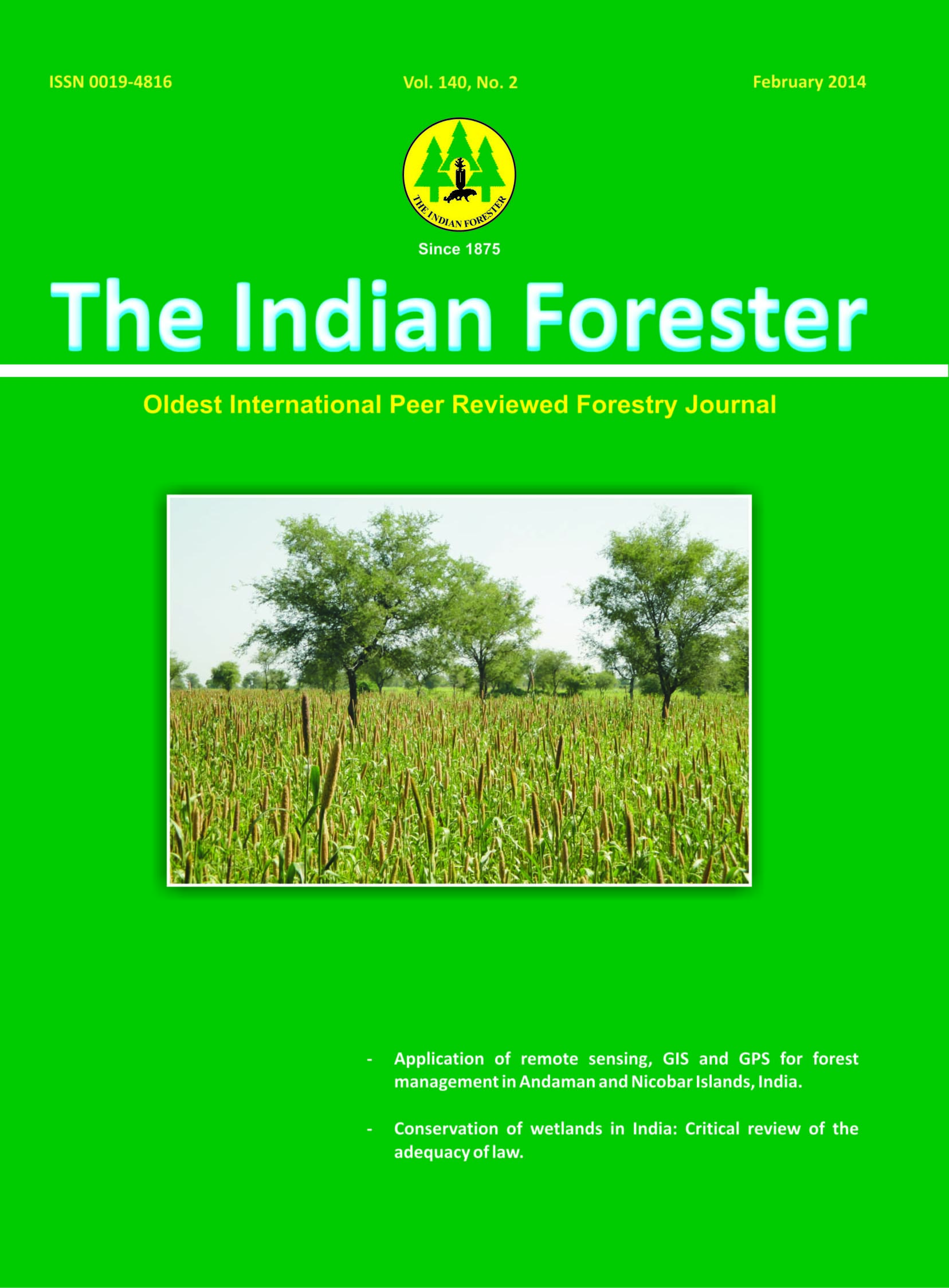Evaluation of Four Different Methods of Genomic DNA Extraction from Quercus leucotricophora
DOI:
https://doi.org/10.36808/if/2014/v140i2/46849Keywords:
DNA, Extraction, Quercus leucotricophora.Abstract
The most essential principal in the modern molecular biology is extraction of DNA with a desirable quantity and quality and this achievement could be the main necessity for every genetic study. DNA extraction is obviously difficult because of negative effects obtained from carbohydrates, tannins, polyphenols and proteins. Extraction of DNA from Quercus leucotricophora, was conducted by four different methods. The most value of qualified DNA extracted from young leaf tissue was 629.9 to 1412.1 ng/μl by the method applied by Doyle and Doyle and Stange and his associates with some modifications. Accordingly above method is recommended for DNA extraction from young leaves of Quercus leucotricophora.References
Bradshaw, H.D. and Stetler, R.F. (1993). Molecular genetics of growth and development in Populus.I. Triploidy in hybrid Poplars. Theor. App.Genet., 86: 301-307.
Bushra, C.; Afshan, Y.; Tayyab,H. and Riazuddin, S. (1999). Mini-scale genomic DNA extraction from cotton. Plant Mol. Biol. Rep., 17: 1–7.
Doyle, J.J. and Doyle, J.L. (1990). Isolation of plant DNA from fresh tissue. Focus, 12: 11–5.
Laura, M.; Benedetti, L. De.; Bruna, S.; Burchi, G.; Berio, T.; Giovannini, A. and Ruffoni, B.(2003). Cyclamen persicum mill: Somatic embryogenesis and RAPD analysis of embryogenic callus. Acta Hort., (ISHS) 625: 137–44
Lodhi, M.A.; Ye, G.N.; Weeden, N.F. and Reisch, B.I. (1998). A simple and efficient method DNA extraction from grapevine caltivars and vitis species. Plant Mol. Biol. Rep., 12: 6–13.
Naderi, R.; Khalighi, A.; Arzani, K. and Babalar, M. (2000). Effects of storage temperature, chemical treatment, harvesting stage and genotype on vase life of cut flowers of cyclamen (Cyclamen persicum Mill.). Seedand Pl. J., (SPII), 16: 240–51
Porebski, S.; Bailey L. and Boum; B.R. (1997). Modification of a CTAB DNA extraction protocol for plants containing high polysaccharide and polyphenol components. Plant Mol. Biol. Rep., 15: 8–15.
Stange, C.; Prehn, D. and Johnson, P.A. (1998). Isolation of Pinus radiata genomic DNA suitable for RAPD analysis. Plant Molecular Biology Reporter, 16:1-8.
Zhang, J.; McDonald, M.B. and Sweeney, P.M. (1997). Testing for genetic purity Petunia and Cyclamen seed using random amplified polymorphic DNA markers. J. Amer. Soc. Hort. Sci., 32: 246–7.
Downloads
Downloads
Published
How to Cite
Issue
Section
License
Unless otherwise stated, copyright or similar rights in all materials presented on the site, including graphical images, are owned by Indian Forester.





